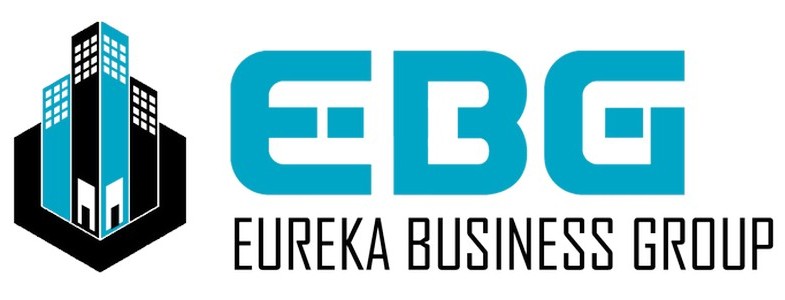- Home
- Retail
- Retail Investors Resources
- The Death of Traditional Retail Centers: Why Your Shopping Center Could Be Next!
The Death of Traditional Retail Centers: Why Your Shopping Center Could Be Next!
Four recent shifts reshaping DFW retail real estate in 2025 – and how smart property owners are already adapting
The retail landscape we once knew is dead. As a retail property owner, you’re probably already feeling the tremors of change. The comfortable predictability of traditional retail centers is giving way to a new reality that demands evolution – or extinction.
Through my decades of experience in and around retail, I’ve watched retailers and by proxy retail assets struggle and fail because they refused to acknowledge these changes until it was too late. But here’s the truth: the retail apocalypse isn’t coming – it’s already here. And it’s not what you think.
While these are Retail trends, I’ll focus on what it means to retail asset owners and how shopping centers can adapt to support the retail industry through these changes in consumer preferences and behavior.

Trend #1: The Experience Revolution
Gone are the days when simply providing space for transactions was enough. Today’s consumers crave experiences, not just transactions. Look at successful developments like the Shops at Legacy and Legacy West in Plano. These aren’t just shopping centers – they’re destinations where people spend entire afternoons or evenings. They offer a carefully curated mix of retail, dining, entertainment, and community spaces that keep visitors engaged and coming back.
But here’s what most property owners miss: creating an experiential retail environment isn’t just about adding a few benches or hosting occasional events. It requires a fundamental shift in how we think about retail spaces. Your shopping center isn’t just a collection of stores – it’s a stage for community engagement and memorable experiences.
Retail developers must pay extra attention to this trend. In a recent conversation with a senior economic development person from one of the hottest suburbs in the Dallas – Fort Worth area he clearly expressed that the city is craving destination retail and developers that will propose projects that serve as entertainment and experience centers for the community will get priority over the developers that offer the traditional (obsolete?) approach.
Trend #2: The Hybrid Retail Revolution
The second major shift is the rise of hybrid retail. Your tenants need to serve customers who want the convenience of online shopping with the immediacy of physical retail. This isn’t just about having an online presence – it’s about seamlessly blending digital and physical experiences.
Smart property owners are already adapting their centers to accommodate this new reality. Think dedicated curbside pickup zones, enhanced parking lot flow for quick-service options, and flexible spaces that can serve multiple purposes. The question isn’t whether your tenants will need these capabilities – it’s whether your property will be ready when they do.
Trend #3: The Big Box Exodus and the death of Amazon competitors
Perhaps the most visible change in our market is the decline of traditional big box retail. We’re seeing major anchors like Albertsons, Kroger, and Kohls leaving shopping centers, often leaving property owners scrambling to fill massive vacant spaces. But here’s the opportunity most miss: these departures create possibilities for revolutionary repositioning by repurposing for creative uses!
In the past few months, we have witnessed traditional retailers such as Big Lots, Party City, Joann and The Container Stores shutting down operations and closing stores. These are all direct competitors of amazon that offered no value beyond the transaction and in the transactional retail, it’s really hard to compete with Amazon and Walmart (which brings us back to trend #1). All these spaces will be vacated and will be opportunity for the retail owners to re-tenant and capitalize on the historic low vacancy in retail.
Trend #4: The Consumer’s Shift to Local
The fourth and perhaps most surprising trend is the growing demand for local, community-focused retail. While national brands still drive significant traffic, consumers increasingly seek authentic, local experiences. In one of our shopping centers, a Guatemalan restaurant has become the de facto anchor, drawing customers from miles away because it offers something unique and authentic.
Adapting Your Property for Success
Successfully navigating these changes requires more than surface-level adjustments. It sometimes demands a complete reimagining of your property’s role in the community.
Here’s how forward-thinking owners are adapting:
First, they’re diversifying their tenant mix beyond traditional retail. This might mean incorporating fitness centers, medical offices, or entertainment venues. The key is creating a ecosystem that serves multiple community needs.
Second, they’re getting creative with space utilization. Short-term leases, pop-up stores, and temporary events can generate additional revenue while building community engagement. Think farmers markets in your parking lot or seasonal retailers in vacant spaces.
Third, they’re investing in creating public spaces that encourage community gathering. Whether it’s adding outdoor seating areas, creating space for live events, or incorporating art installations, these improvements drive foot traffic and extend visit duration.
The Path Forward
The retail real estate market in DFW is evolving faster than ever. Property owners who recognize and adapt to these changes won’t just survive – they’ll thrive. The question isn’t whether these changes will affect your property – it’s whether you’ll be prepared when they do.
As your retail navigator in the Dallas-Fort Worth market, we help retail property owners to successfully transform their retail centers to meet these new market demands. The opportunities are there, but they require vision, expertise, and decisive action.
What changes are you seeing in your retail properties? How are you adapting to meet these new challenges? Share your experiences in the comments below – I’d love to hear your perspective and continue this important conversation.
#DFWRetail #RetailNavigator #CommercialRealEstate #EBG

